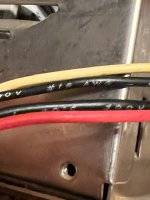Looking to make my own Male and Female Molex power cables, I found that there are few sizes. There are the part numbers:
- 60618 (Male) and 60617 (Female) for AWG size 24~18
- 60620 (Male) and 60620 Female) for AWG size 20~14
...Though not sure what the differences are (size?, diameter?) but I would have thought that there was one size only, or at least all my 4 pin power molex connectors are. Anyone knows which is the right part #s for the standard 4 pin Power Molex Cables?
Also What tool is the right the to Crimp these? I found some second hand online (asuming these were the right one which I dont know as I cant confirm the sizes).. but the price is astronomical, they are ancient and rusty and can't tell which one is for what size.
Anyone has tried to build their own 4 pin Power Molex Cables and went thought these issues .... If so any guidance would be very much appreciated.
- 60618 (Male) and 60617 (Female) for AWG size 24~18
- 60620 (Male) and 60620 Female) for AWG size 20~14
...Though not sure what the differences are (size?, diameter?) but I would have thought that there was one size only, or at least all my 4 pin power molex connectors are. Anyone knows which is the right part #s for the standard 4 pin Power Molex Cables?
Also What tool is the right the to Crimp these? I found some second hand online (asuming these were the right one which I dont know as I cant confirm the sizes).. but the price is astronomical, they are ancient and rusty and can't tell which one is for what size.
Anyone has tried to build their own 4 pin Power Molex Cables and went thought these issues .... If so any guidance would be very much appreciated.

